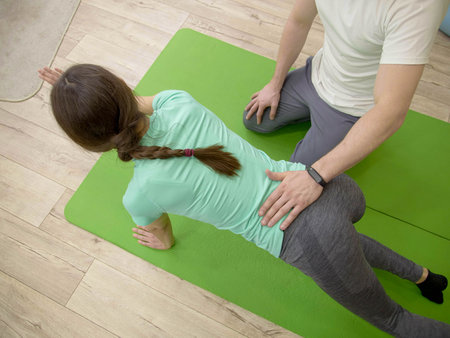Understanding Childhood Injuries in the UK
Childhood injuries are an all-too-common reality for families across the United Kingdom, and understanding their nature is a vital first step in providing effective support during rehabilitation. In the UK, children experience a range of injuries, from minor bumps and scrapes to more serious incidents such as fractures, burns, or head injuries. The most frequent causes include falls at home or on playgrounds, road traffic accidents, sports-related mishaps, and sometimes even incidents within school settings. Each injury type carries its own unique set of challenges, not just for the child but also for their family members who navigate the journey towards recovery together. These events can be distressing and disruptive, often impacting a young persons confidence, independence, and emotional wellbeing. For parents and carers, witnessing a child’s pain or fear can bring feelings of helplessness and worry. By recognising the common causes and types of childhood injuries specific to the UK context—such as those associated with cycling without appropriate safety gear or participating in popular local sports like football—we can better appreciate both the physical and emotional hurdles that arise post-injury. This understanding lays the groundwork for compassionate, tailored rehabilitation approaches that address not only the body but also the heart and mind of each young person affected.
2. Physical Rehabilitation: Approaches and Best Practices
Supporting a child through physical rehabilitation after an injury is a journey that requires not only professional expertise but also warmth and understanding. The UK offers a comprehensive, multi-disciplinary approach to help children regain their strength, mobility, and confidence, guided by NHS recommendations and best practices tailored for young patients.
Overview of Physiotherapy
Physiotherapy plays a crucial role in post-injury recovery for children. In the UK, paediatric physiotherapists work closely with families to develop personalised exercise programmes that address each child’s specific needs. These programmes focus on restoring movement, reducing pain, and preventing long-term complications. The NHS often provides community-based physiotherapy services, which means care can continue at home or in local clinics, making support accessible and family-friendly.
Key Elements of Paediatric Physiotherapy
| Component | Description | UK/NHS Guidance |
|---|---|---|
| Assessment | Thorough evaluation of mobility, strength, and function | NHS recommends early assessment for tailored plans |
| Exercise Therapy | Structured activities to improve range of motion and strength | Guided by physiotherapist; often provided as home exercises |
| Pain Management | Techniques such as manual therapy and advice on safe movement | NHS offers guidance on non-pharmacological methods first |
| Family Involvement | Parents and carers learn how to support exercises at home | Encouraged by NHS for continuity of care |
The Role of Occupational Therapy
Occupational therapists (OTs) help children adapt daily activities—like dressing, playing, or returning to school—following an injury. UK OTs focus on practical solutions that fit family routines and school environments. They may recommend adaptive equipment or suggest modifications at home or in the classroom to ensure safety and independence.
Common Occupational Therapy Supports in the UK:
- Home Adaptations: Simple changes such as grab rails or reorganised play spaces
- School Liaison: Collaboration with teachers to adjust workloads or seating arrangements
- Sensory Strategies: Techniques for managing sensory sensitivities following trauma or immobilisation
At-Home Support and Community Resources
The NHS recognises that healing continues outside the clinic. Families are encouraged to integrate rehabilitation exercises into daily life—during playtime, walks in the park, or even household chores. Local support groups and charities like Scope or Contact offer advice and peer connections for families navigating recovery together.
NHS Guidance for Children’s Physical Recovery
- Tailored Programmes: Rehabilitation plans should match the childs age, interests, and developmental stage.
- Collaborative Approach: Healthcare professionals work in partnership with parents/carers and schools.
- Regular Review: Progress is monitored routinely to adapt goals as needed.
- Mental Health Consideration: Emotional well-being is supported alongside physical recovery (more detail in later sections).
This collaborative approach ensures every child receives compassionate, effective care that fits their unique circumstances within the context of UK healthcare systems.

3. Supporting Emotional Wellbeing During Recovery
Recovering from an injury can be a challenging and emotional journey for children, often marked by feelings of frustration, fear, and uncertainty. Recognising and addressing these emotional responses is just as vital as supporting physical rehabilitation. In the UK, there is increasing awareness of the importance of a holistic approach that integrates both emotional and physical care during recovery.
Exploring Emotional Responses After Injury
After an injury, children may experience a range of emotions such as sadness, anger, anxiety, or even guilt—especially if the injury limits their ability to join in with friends or school activities. It’s important for parents and carers to gently acknowledge these feelings and provide reassurance that such emotions are normal. Encouraging open conversations about their experiences can help children feel heard and understood.
Strategies for Emotional Support at Home and School
At home, maintaining familiar routines and offering gentle encouragement can foster a sense of security. Allowing children to express their worries without judgement helps build trust. Simple activities like reading together, creative play, or family walks (where appropriate) can promote connection and comfort.
Within schools, teachers and pastoral staff play a crucial role in supporting emotional wellbeing. Open communication between families and school staff ensures that any necessary adjustments—such as flexible timetables or additional learning support—are put in place. Schools across the UK increasingly utilise well-established pastoral care systems to monitor pupils’ mental health, providing safe spaces where children can talk about their feelings.
Input from British Mental Health and Social Care Services
If a child’s emotional distress appears prolonged or severe, seeking professional input is essential. In the UK, resources such as Child and Adolescent Mental Health Services (CAMHS) offer specialist support tailored to young people’s needs. GPs can make referrals to CAMHS or recommend local counselling services. Additionally, charities like YoungMinds and Childline offer practical advice and helplines for both parents and children.
The involvement of social care professionals may also be beneficial for families facing complex challenges during recovery. Social workers are trained to coordinate care plans that address both practical needs and emotional wellbeing, ensuring a supportive environment for healing.
Gentle Guidance for Families
Navigating the emotional landscape after an injury requires patience, empathy, and collaborative care. By fostering open dialogue at home and school—and drawing on the expertise available through British mental health and social care services—families can help children rebuild confidence, resilience, and a sense of hope for the future.
4. Involving Families and Carers in the Rehabilitation Process
The journey of post-injury rehabilitation for children is not one that should be travelled alone. In the UK, the active involvement of families, guardians, and primary carers is widely recognised as a cornerstone of effective recovery. By working closely with medical professionals and community resources, families can help to create a supportive environment that nurtures both the physical and emotional wellbeing of the child.
Understanding the Role of Families and Carers
Families and carers are often the first to notice changes in a child’s mood, motivation, or physical abilities. Their ongoing support provides continuity between clinical settings and home life. Engaging with rehabilitation programmes at home—guided by physiotherapists, occupational therapists, or speech and language therapists—can significantly enhance outcomes. It is important for carers to stay informed about each stage of the rehabilitation plan and to communicate regularly with healthcare providers.
Utilising UK Social Care Resources
The UK offers a variety of social care resources designed to support families through challenging times. Local authorities provide access to family support workers, respite care options, and practical guidance on adapting homes for accessibility. NHS community teams frequently offer training sessions for carers, equipping them with skills to aid mobility exercises or manage emotional responses in children following injury.
Community Programmes for Ongoing Support
Many local councils and charities across England, Scotland, Wales, and Northern Ireland run community-based programmes tailored for young people recovering from injuries. These may include peer support groups, therapeutic recreation activities, or parent education workshops. Participation can reduce isolation for both children and their families while fostering new coping strategies.
Summary Table: Ways Families Can Participate in Rehabilitation
| Area | How Families/Carers Can Help | UK Resources |
|---|---|---|
| Physical Rehabilitation | Assist with daily exercises and monitor progress at home | NHS Therapy Guidance; Community Physiotherapy Teams |
| Emotional Support | Create an open space for sharing feelings; encourage positive routines | MIND UK Helpline; YoungMinds Parent Services |
| Practical Adjustments | Modify living spaces to ensure safety and accessibility | Local Authority Occupational Therapy Services |
| Peer & Social Integration | Encourage participation in clubs or support groups post-injury | Council Youth Services; The Children’s Trust Groups |
| Ongoing Learning & Training | Attend relevant workshops or online training sessions together | NHS Carers’ Workshops; Carers UK Online Resources |
Remember, every small act of involvement makes a meaningful difference. By drawing upon trusted UK resources and maintaining gentle communication within the family unit, carers can help children navigate their rehabilitation journey with confidence and hope.
5. Working with Schools and Community Support
Reintegrating a child into school and their community after an injury is a delicate process, requiring thoughtful collaboration and communication. It’s vital to involve not only the child and their family but also teachers, Special Educational Needs Coordinators (SENCOs), and local community organisations. This approach ensures the child’s physical recovery is matched by emotional reassurance and social inclusion.
Partnering with Teachers and SENCOs
Teachers play a pivotal role in supporting a child’s return to education. It is helpful to arrange a meeting before the child returns to discuss any adjustments needed for lessons, physical activities, or break times. SENCOs are invaluable allies, bringing expertise on special arrangements, reasonable adjustments, and access to additional resources that can smooth the transition. Together, you can develop an Individual Education Plan (IEP) tailored to the child’s new needs, which may include modified timetables, rest breaks, or quiet spaces when required.
Maintaining Open Communication
Regular updates between home and school are essential. Agree on a preferred method of contact—whether email, phone calls, or a home-school diary—to share progress and flag up any concerns early on. Involving the child in these conversations where appropriate helps them feel heard and respected during what can be an unsettling time.
Engaging Local Community Resources
Community groups such as youth clubs, sports teams with adaptive programmes, or local charities often provide valuable support networks outside of school. These organisations can help the child rebuild confidence and friendships in a more relaxed setting. Many have experience working with children recovering from injury and can adapt their activities to accommodate different abilities.
Fostering Social Inclusion
Encourage gentle reintroduction to group activities at the child’s own pace. This might mean starting with one-to-one sessions or smaller groups before joining larger gatherings. It’s important for children to feel included without pressure; social reintegration is as much about emotional readiness as it is about physical capability.
Long-Term Collaboration
The journey back to school and community life is rarely linear. Ongoing partnership between families, educational staff, and local organisations creates a supportive web around the child. Regular reviews ensure that support remains appropriate as their needs evolve. With this compassionate teamwork, children have the best chance to regain not just their skills but also their sense of belonging and joy.
6. Promoting Independence and Confidence
Empowering children to regain their independence after an injury is a vital part of holistic rehabilitation, both physically and emotionally. In the UK context, this process must be underpinned by safeguarding principles and inclusive practices, ensuring every child’s well-being and right to thrive are upheld.
Encouraging Self-Care Skills
Supporting children in relearning or adapting daily self-care routines helps restore a sense of normality and autonomy. Occupational therapists and rehabilitation teams often employ gentle guidance, breaking tasks into manageable steps. For example, children are encouraged to participate in dressing, personal hygiene, and mobility activities as soon as it is safe to do so. Using adaptive equipment or strategies tailored to individual needs ensures inclusivity, allowing every child the opportunity to succeed at their own pace.
Nurturing Resilience Through Supportive Environments
Resilience grows when children feel supported yet appropriately challenged. Creating a nurturing environment—whether at home, school, or in community settings—enables children to express their feelings about their recovery journey. In the UK, multi-disciplinary teams often work together with families and educators to establish realistic goals that celebrate progress, however small. This collaborative approach fosters perseverance while safeguarding emotional well-being.
Building Confidence and Social Inclusion
Confidence blossoms when children are encouraged to try new activities and gradually take on more responsibility for their recovery. Peer support groups or inclusive play opportunities, often facilitated by local authorities or charities in the UK, help prevent isolation and promote belonging. Practitioners should always be mindful of safeguarding guidelines, ensuring that all interactions prioritise safety and respect for the childs voice. By recognising each child’s unique abilities and strengths, adults can empower them to believe in themselves again.
Ultimately, promoting independence and confidence in post-injury rehabilitation is not just about physical milestones; it is about nurturing hope, resilience, and self-worth within a protective framework. With warmth and patience, we can help every recovering child feel valued and capable on their journey towards recovery.
7. Accessing Resources and Support Networks in the UK
Navigating the journey of post-injury rehabilitation can feel overwhelming for children and their families, but you are not alone. Across the UK, a range of services, charities, and online resources exist to help guide and support you through this time.
Specialist Healthcare Services
The NHS provides paediatric physiotherapy, occupational therapy, and psychological support as part of most local hospital trusts and community health teams. Your GP or consultant can refer your child to these services, ensuring professional guidance tailored to physical and emotional recovery needs.
Charities Offering Practical and Emotional Support
Several UK-based charities focus on helping children with injuries and their families. Child Brain Injury Trust and Kidz Aware offer advice, family support workers, peer groups, and educational resources. Scope supports disabled children and those with mobility challenges. These organisations can provide equipment, grants, counselling, or simply a listening ear when you need it most.
Online Communities and Helplines
Online forums such as Mumsnet, Contact, and specific Facebook groups connect parents experiencing similar challenges. The NHS 111 helpline is available for urgent health questions, while Samaritans (116 123) offers confidential emotional support to anyone struggling to cope.
Practical Advice and Information Hubs
The NHS Social Care and Support Guide, Contact, and the Scope website have comprehensive guides on rehabilitation rights, funding options, home adaptations, assistive technology, educational support plans, and more. Your local council’s Family Information Service is another valuable point of contact.
A Gentle Reminder
Rehabilitation is not just about physical healing; it is equally about nurturing hope and resilience. Reaching out for help is a strength, not a weakness. Involving your child in choosing resources or groups they feel comfortable with can empower them emotionally too. Remember: there are people ready to walk alongside your family every step of the way.


